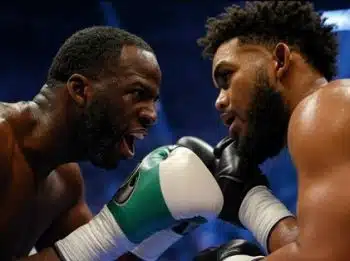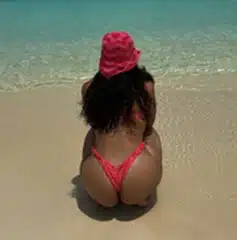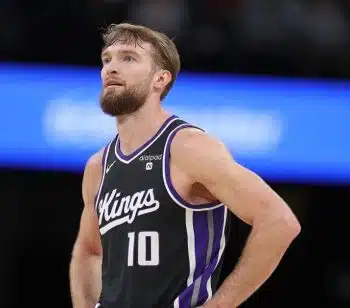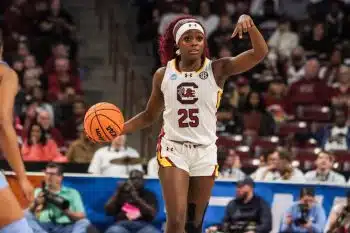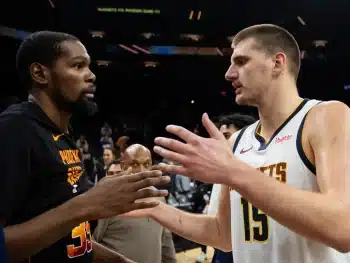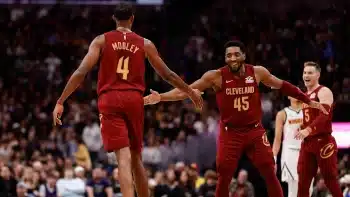NBA
State of the Lakers: Where To Go From Here?
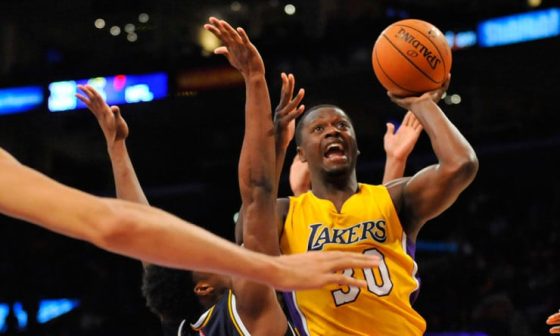
Many fans and NBA analysts predicted this would be another down year for the Los Angeles Lakers. The team hired a new head coach in Byron Scott, Kobe Bryant was returning from a torn Achilles tendon, Steve Nash was recovering from debilitating leg and back injuries, Pau Gasol left to play with the Chicago Bulls and the rest of the roster lacked overall talent.
Unfortunately, this season has gone even worse than many of those fans and analysts predicted. Nash re-aggravated his back injury while carrying some bags, which would sideline him for the entire season. Heralded rookie Julius Randle broke his leg in the Lakers’ season opener against the Houston Rockets and has been rehabbing all season. Bryant played heavy minutes early in the season and eventually tore his rotator cuff in January, which ended his season prematurely. Because of the shallow roster and bad luck with injuries, this has turned out to be the worst season in the franchise’s proud history.
The Lakers currently have the fourth-worst record in the league, and as a result have an 82.8 percent chance of retaining their top-five protected 2015 first-round pick. If the Lakers end up falling outside of the top-five, their pick will be transferred to the Philadelphia 76ers, who acquired the rights to the pick in a deal with the Phoenix Suns at this year’s trade deadline.
So who will Lakers general manager Mitch Kupchak and executive vice president of basketball operations Jim Buss target with their potential top-five pick?
Many analysts believe that the first pick in the draft will either by Jahlil Okafor of Duke or Karl-Anthony Towns of Kentucky. Either player would provide the Lakers with a talented big man to put next to Julius Randle in the front-court next season. However, if Okafor or Towns is not available when it is the Lakers turn to pick, they can look to draft a guard to put next to rising rookie Jordan Clarkson, such as D’Angelo Russell from Ohio State or Emmanuel Mudiay, who played for the Guangdong Southern Tigers of the Chinese Basketball Association. Any of these four players would be a great addition for Los Angeles and would be a significant step in rebuilding the team.
The Lakers will have another first-round pick in the upcoming draft, which they acquired from the Houston Rockets in the deal that landed Jeremy Lin in Los Angeles. This pick will likely end up being one of the last picks in the first-round, but with some luck, the Lakers could end up with another solid player to help rebuild the roster around (especially when you consider that Clarkson was selected 46th overall in last year’s draft by the Washington Wizards and then acquired by the Lakers for cash considerations).
Taking care of the draft is the first order of business for the Lakers this upcoming offseason. The next matter to address is free agency.
The Lakers can potentially have as little as $35 million in guaranteed salary next season. However, the Lakers do have a team option on Jordan Hill for next season at $9 million, which they are reportedly leaning toward exercising. With Hill, the Lakers will have roughly $44 million in salary, which will leave them with around $23 million in cap space, assuming the cap is set around $67.4 million next season.
Ed Davis also has a player option to exercise the second year of his deal, which would pay him $1.1 million next season. However, Davis will likely not exercise that option and instead test free agency, where he is likely to land a significantly better deal than his current one with Los Angeles. Jordan Clarkson, Tarik Black and Jabari Brown each have non-guaranteed salary for next season at $845,059, while Robert Sacre has non-guaranteed salary set at $981,348. Considering their age, potential and affordable salary, it is likely that the Lakers bring Black and Sacre back, while it is a foregone certainty that Clarkson will be back.* With at least Clarkson, Black and Sacre back (though Sacre may be squeezed out based on what the Lakers do in the draft and in free agency), the Lakers will then have closer to $20.3 million in cap space.
Now that we know how much money the Lakers can potentially have to use in free agency this upcoming offseason, the next question is, who should they pursue? The Lakers as a franchise have always swung for the fences, unafraid of pursuing prime time free agents and making splashy deals for star players. Here is a list of some, but not all of the best players who will be free agents this upcoming offseason:
Marc Gasol (unrestricted)
LaMarcus Aldridge (unrestricted)
Paul Millsap (unrestricted)
DeAndre Jordan (unrestricted)
Greg Monroe (unrestricted)
Rajon Rondo (unrestricted)
Robin Lopez (unrestricted)
Wesley Matthews (unrestricted)
Omer Asik (unrestricted)
LeBron James (player option)
Kevin Love (player option)
Al Jefferson (player option)
Goran Dragic (player option)
Monta Ellis (player option)
Dwyane Wade (player option)
Jeff Green (player option)
Roy Hibbert (player option)
Brook Lopez (player option)
Kawhi Leonard (restricted)
Draymond Green (restricted)
Jimmy Butler (restricted)
Khris Middleton (restricted)
Brandon Knight (restricted)
Reggie Jackson (restricted)
Iman Shumpert (restricted)
Patrick Beverley (restricted)
Tristan Thompson (restricted)
K.J. McDaniels (restricted)
Enes Kanter (restricted)
The most attractive names on this list include players like LaMarcus Aldridge and Marc Gasol, both of whom are unrestricted free agents. The problem with guys like this is that they are most likely going to re-sign with their current teams. Then, there are players like Kevin Love, who could conceivably join a new team in free agency based on his current circumstances. But these players will have the option to opt into the last year of their current contract, which may be beneficial for them with the cap set to raise significantly in 2016 because of the NBA’s new TV deal. And gambling on restricted free agents is always risky, especially ones who are likely to be retained by their current teams at any price. Signing a restricted free agent to an offer sheet ties up that money for several days while the player’s original team considers whether to match the offer or not, which creates the possibility of missing out on other free agents.
So what strategy should the Lakers take? Like most things in life, it depends. If the Lakers are trying to maximize their final year with Bryant, then they should probably go after veterans that can help them immediately, irrespective of age. But does it make sense to commit serious, and perhaps long-term money to players just to cater to a star player in his final season? Kobe has certainly earned such consideration, but that course of action could hamper the Lakers’ ability to compete at a high level for years after Kobe is gone.
With this in mind, the Lakers should probably go after players that represent good value, rather than simply pursuing stars and big names. Specifically, the Lakers could go after someone like Wesley Matthews, who is currently recovering from a ruptured Achilles tendon. Yes, going after a shooting guard with a surgically repaired Achilles is risky, but Matthews is still just 28 years old, has only been in the NBA since 2009 and is one of the hardest workers in the league. He has established himself as one of the best three-point shooters in the league and the Portland Trail Blazers’ recent play without Matthews has shown us just how valuable of a contributor he is. The market may be lukewarm for him this upcoming offseason because of the injury, and the Lakers could potentially land him on a team-friendly deal to take over as the starting shooting guard moving forward (similar to how the Golden State Warriors locked Stephen Curry into a long-term, team-friendly deal because of his recurring ankle issues).
Or how about someone like Omer Asik? Rather than offering someone like DeAndre Jordan a max (or near-max) contract, why not try to lock up a gritty rim protector like Asik on a multi-year deal averaging around $7-8 million a season? Asik isn’t an exciting, above the rim player like Jordan, but he is still 28 years old, isn’t heavily reliant on his athleticism, has a proven track record of anchoring defenses, and plays within his role.
Of course, Matthews and Asik may not be the answers for the Lakers in free agency, but they are examples of realistic free agents that the Lakers arguably should target: players who could still have a lot of miles left and could be had for a reasonable price. But if the Lakers want to go after younger players, which isn’t a bad idea, they could go after someone like Khris Middleton of the Milwaukee Bucks.
Middleton has made a name for himself this season with impressive improvements on both sides of the ball. He doesn’t put up huge box score numbers, but he ranks well in some notable advanced metrics. For example, he is ranked eighth in the league in ESPN’s Real Plus-Minus metric (6.39). That, and he is only 23 years old. But again, the problem with young, valuable players like Middleton is that his current team, and the rest of the league, knows how good he is and is willing to pay big bucks for him. The Lakers could try to snag him away on a deal similar to the one the Dallas Mavericks gave Chandler Parsons, but the Bucks still may decide to match the deal and retain him regardless.
Whatever strategy the Lakers take in free agency this upcoming offseason, it should be rooted in concern for their long-term outlook. Giving a player like Rajon Rondo a near-max contract to make Kobe happy makes sense if the team is one veteran point guard away from making a legitimate run for a championship. But that’s not where this team is or is likely to be next season. And with Clarkson’s rapid development, it may be more beneficial for the Lakers to develop him, rather than spending a huge amount of money on a veteran point guard.
The free agent market is a fluid place where a lot of unexpected things can happen. If the market doesn’t shape up in a favorable way for the Lakers, they should probably hold on to a sizable portion of their cap space and carry it over to 2016, rather than overpaying an older player just to make a splashy acquisition. However, if someone as talented and young as Love becomes available, then yes, the Lakers should go after him (despite the questions about his game that have bubbled to the surface this season).
Beyond personnel moves, the Lakers, and specifically head coach Byron Scott, need to strongly consider revamping their offensive system.
Before the season started, Scott said the Lakers would limit their three-point attempts because they aren’t conducive to winning championships. However, a look into past championship teams shows that three-pointers are in fact a major component of past championship teams. In addition, the best offenses in the league this season come from teams that shoot extremely well from three-point range, including the Golden State Warriors, Los Angeles Clippers and Atlanta Hawks. Also, the modern NBA has collectively moved toward motion-based offenses that include constant off-ball movement, spreading the court with three-point shooters, heavy doses of pick and roll, and limiting inefficient shots like mid-range jumpers. Yet, Scott and the Lakers seem to be going in the opposite direction, and the results speaks for themselves.
According to NBA.com, the Lakers attempt the second-most mid-range field goals per game in the league (29.3). Mid-range jumpers are statistically inefficient shots and really should only be taken in volume from exceptional mid-range shooters like Chris Paul. In addition, the Lakers attempt less than two three-point attempts from the corners, which is one of the most efficient shots there is. Consider that the only team that takes a higher number of mid-range jumpers per game than the Lakers, and almost no shots from the corners, is the woeful New York Knicks.
And as previously mentioned, the Lakers don’t move the ball particularly well either. The Lakers average the third-least amount of passes per game (273.2), are 20th in assists per game (20.9) and 27th in points earned off of assists per 48 minutes (46.6). Earlier this week, Zach Lowe of Grantland pointed out a great illustration of the sort of isolation plays the Lakers run, which feature little to no passing and almost zero off-ball movement. Lowe pointed out that Scott will oftentimes run a play out of the huddle to get Jordan Hill an isolation jump-shot from around 18 feet out. That is not kind of play that is featured in efficient offenses and is a shot that defenses try to force opposing teams to take.
There is potential to turn the offense around, however. Scott doesn’t need to adopt every popular offensive trend. During the preseason, Scott was running elements of the Triangle offense, which looked promising. However, that system was quickly abandoned at the beginning of the season. Rather than running the Triangle, Bryant started putting up a huge number of shots and the Lakers offense became stagnant and iso-reliant. The Triangle may not be as effective in the modern NBA as it used to, but Steve Kerr has proven with the Warriors this season that a team can successfully utilize elements of it with great results.
The defense also needs to be revamped, but that has a lot more to do with personnel than anything else. Adding players like Asik, Middleton or Matthews would go a long way toward addressing the defensive side of the ball. This year’s squad simply did not have the players to create a top-10, or even league average defense. Guys like Carlos Boozer and Jeremy Lin just aren’t great defensive players and there is only so much scheming a team can do to get around these sort of limitations. Scott preaches defense, and it’s up to the Lakers to acquire players that are willing to buy in and dedicate themselves to that side of the ball.
The Lakers currently have two young players who are clearly part of their future plans. Jordan Clarkson and Julius Randle both have the potential to be starters for the Lakers next season and both are on cost-controlled rookie contracts. Assuming the Lakers land a solid rookie with their first-round pick, they will have at least three players to constitute their young core, and can start plugging in pieces from there. But the Lakers need to avoid taking shortcuts in their re-building process. They should pass on pursuing past-their-prime stars and focus on younger impact players who can grow together on manageable contracts.
The Lakers are down, but shouldn’t be counted out. It may take a few seasons to really turn things around, but the opportunity to start building a sustainable, contending team will be present this upcoming offseason. A combination of smart acquisitions and internal growth are essential elements of that process, which is something that falls on the front office, coaches and players.
